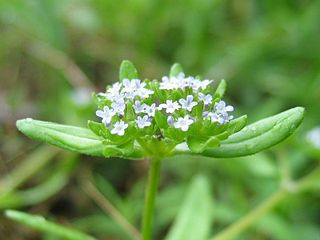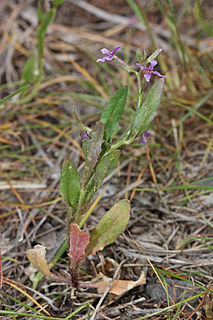
Heracleum is a genus of biennial and perennial herbs in the carrot family Apiaceae. They are found throughout the temperate northern hemisphere and in high mountains as far south as Ethiopia. Common names for the genus or its species include hogweed and cow parsnip.

Matthiola ( is a genus of flowering plant in the mustard family Brassicaceae. It is named after Italian naturalist Pietro Andrea Mattioli. The genus contains about 50 species of annual, biennial and perennial herbaceous plants and subshrubs. Many are cultivated for their heavily scented, colorful flowers.

Verbascum, common name mullein, is a genus of about 360 species of flowering plants in the figwort family Scrophulariaceae. They are native to Europe and Asia, with the highest species diversity in the Mediterranean.

The genus Anchusa belongs to the borage family (Boraginaceae). It includes about 35 species found growing in Europe, North Africa, South Africa and Western Asia. They are introduced in the United States.

Isatis is a genus of flowering plants in the family Brassicaceae, native to the Mediterranean region east to central Asia. The genus includes woad. Due to their extremely variable morphology, the Asian species in particular are difficult to determine; the only reliable diagnostic feature is the ripe fruit. They are (usually) biennial or perennial herbaceous plants, often bluish and hairless or downy hairy with the upright stem branched.

Draba is a large genus of flowering plants in the family Brassicaceae, commonly known as whitlow-grasses.

Chaerophyllum is a genus of flowering plant in the family Apiaceae, with 35 species native to Europe, Asia, North America, and northern Africa. It includes the cultivated root vegetable Chaerophyllum bulbosum.

Valerianella is a genus of plant in family Caprifoliaceae. Many plants of this genus are known by the common name corn salad or cornsalad, although that name most often refers to Valerianella locusta.

Peltaria is a genus of flowering plants in the family Brassicaceae. Their distribution ranges from Southeast Europe, Near East to Central Asia. They prefer rocky slopes.

Chorispora is a genus of plant in the family Brassicaceae.

Noccaea is a problematic genus of flowering plants in the family Brassicaceae, native to temperate areas of western North America, southern South America, northern Africa, Europe and Asia.
Crucihimalaya is a genus of flowering plants belonging to the family Brassicaceae.
Didymophysa is a genus of flowering plants belonging to the family Brassicaceae.
Haplophyllum is a genus of flowering plants belonging to the family Rutaceae.
Morettia is a genus of flowering plants belonging to the family Brassicaceae.
Pseudoarabidopsis is a genus of flowering plants belonging to the family Brassicaceae.
Neuontobotrys is a genus of flowering plants belonging to the family Brassicaceae.
Pseudocamelina is a genus of flowering plants belonging to the family Brassicaceae.










